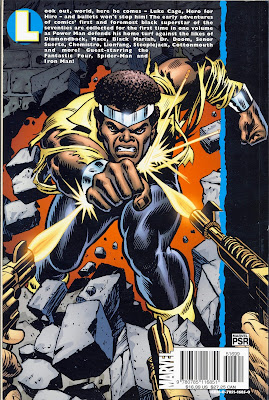The ‘Flashing Swords’ series, published by Dell, was an interesting experiment in providing a forum for novelette-length fantasy, and sword-and-sorcery, tales for the increasing audience this literature was garnering in the mid- to –late 70s. Edited by Lin Carter, most of the submissions came from established genre writers, and all were written specifically for the 'Flashing Swords' imprint.
‘Flashing Swords 4: Barbarians and Black Magicians’ was released in November 1977 and features a stylish cover (of Elric of Melnibone’) by Don Maitz. I purchased the book at that time, and found it reasonably entertaining.
How do the stories stack up more than 30 years after first being read ?
The anthology leads off with an entry by Jack Vance in his ‘Cugel the Clever’ series. Our hero must, as always, rely on his wits to get him out of a scrape involving a rival magician and a short-tempered Prince. At the time I first read ‘The Bag of Dreams’ I was exasperated by Vance’s use of eccentric adjectives and his habit of giving his characters studiously ironic dialogue; but over time I’ve mellowed, and this story, with its emphasis on humor, is more rewarding the second time around.
‘The Tupilak’, by Poul Anderson, is an entry in his series about Scandinavian-flavored mermen. The brother-and-sister pair of Tauno and Eyjan get caught up in a violent feud between Norse and Eskimo. Anderson’s prose is overly labored in its effort to imbue his narrative with a ‘folklore’ flavor. But the bleak, depressing setting of squalid camps in the Arctic Circle, and a formidable monster as an adversary, make ‘The Tupilak’ an effective horror story.
‘Storm in a Bottle’, by John Jakes, is an entry in the 'Brak the Barbarian' saga. This time our hero is held captive in a drought-stricken kingdom ruled by one Lord Magnus and his creepy ally, Ool the magician. Somewhat against character, Brak has to use his brains, rather than his brawn, in order to solve the do-or-die task set to him by Magnus.
Katherine Kurtz provides ‘Swords Against the Marluk’, an entry in her 'Deryni' series. King Brion, his brother Prince Nigel, and Squire Alaric are confronted by the said Marluk, the King of the Elves. Although uneasy about the use of magic, Brion realizes that it is the only means by which he can hope to defeat his enemy and retain control of Wales. Kurtz’s stories have more deliberate pacing than the usual examples of the heroic fantasy genre, but this tale holds together well.
Michael Moorcock provides a story from the Elric saga, in this case ‘The Lands Beyond the World’, which eventually appeared in the book ‘The Sailor on the Seas of Fate’, the second entry in the Elric series. ‘Lands’ is one of the better Elric tales, offering adventures with pirates, decadent mystics, vengeful heroes, and a strange landscape sited in another dimension.
All in all, ‘Flashing Swords 4’ is one of the better fantasy anthologies of the mid-70s, and worth searching out.


































































